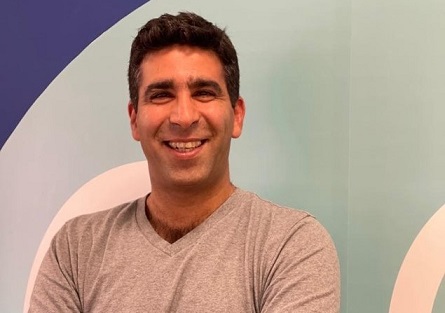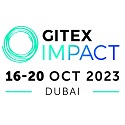|
|
Op-ed: The livesaving potential
for AI-enabled automated
diagnosis of health
conditions
By Jalil Allabadi
How our world is changing – automatic symptom identification will
save lives
As the digital revolution of the healthcare industry continues to take place
across the globe – spurred
on by the COVID-19 pandemic
and the ongoing rapid
adoption of technology -
telehealth services are
increasing access to
healthcare for millions,
without them having to step
foot in a doctor's surgery.
While HealthTech, as it
is now being called, can
bring great advances in
medicine through new cures
and their applications, all
patient diagnoses must first
go through analysis of
individual symptoms to
determine the treatment
required. This necessity has
created a greater demand for
health professionals, and
their precious resource of
time.
Today, advanced
technology is facilitating
the diagnosis of diseases,
and patients no longer have
to physically see a doctor
to get an accurate diagnosis
for their symptoms. And
surprisingly, digital
diagnostics can be even more
accurate than those made by
a human doctor.
Getting it right
Accurate and timely
diagnosis at an early stage
of a disease can have a
significant impact on a
patient's life, and
sometimes mean the
difference between life and
death. However, there are
several elements at play
that can affect accurate
diagnosis.
Firstly,
the communication of
symptoms is a key factor.
The patient’s explanation of
symptoms is usually made
with an inherent
heterogeneity and ambiguity,
using unstructured and
informal expressions. This
can present difficulties for
the doctor in interpreting
which symptoms are present,
as well as identifying and
categorising them accurately
against formal disease
classification codes.
As is often the case,
human error is another, with
potential oversights made by
(usually more inexperienced)
physicians when identifying
symptoms and determining the
correct diagnosis. This is
in part due to the massive
number of symptoms that are
common across different
diseases, which can make
accurate diagnosis unclear,
as well as time-consuming.
To cope with growing
demand clinical
professionals are moving
towards more telediagnosis.
Thankfully, digitalisation
can now offer the means to
aggregate data and use newly
developed programmes or apps
to decipher the information
gathered to assist doctors
in reaching the right
conclusions. This is an
important development when
it has been found that
documenting patient data can
take up 50% of doctors’
time.
The arrival of
digital diagnostics is
nothing short of
revolutionary when the scale
of the challenge is
considered.
AI – doctors' new best
friend
The
world has been witnessing
the evolution of artificial
intelligence (AI)
flourishing and influencing
widely various real-life
domains, including doctors'
clinics.
An
impressive advantage of
online healthcare platforms
is the large volume of data
generated at different
scales of variability.
Analyzing this rich
unstructured data has direct
benefits in improving and
personalizing diagnosis.
Recent research studies have
demonstrated the potential
of AI techniques in
disclosing possible symptoms
contained in text.
Essentially, recognizing the
symptoms from text correctly
results in a higher
probability of determining
the correct diagnosis.
But this can present
challenges for complex
languages, such as Arabic -
the official language of
over 300 million individuals
across 22 countries the
Middle East and North Africa
(MENA) region. This comes in
two forms; modern standard
Arabic (MSA) used in formal
situations, and colloquial
Arabic, where it differs
from one country to another
and from city to city.
Arabic has more alphabet
characters and sounds that
do not exist in other
languages, with Arabic
dialects ensuring the same
word can be written
differently (aside from
misspellings too). This
makes Arabic pre-processing
a harder process.
Recently, machine and deep
learning methods have
enriched the diagnosis
procedure by the automation
of various processes. Now,
automation through
alphanumeric codes can map
diseases into generic
categories, including
symptoms, standardizing the
processing, presentation,
and transfer of individuals'
medical information via
healthcare facilities – even
in Arabic.
The
resulting computer-aided
diagnosis (CAD) systems are
emerging computational tools
that have demonstrated an
ability to not just improve
the reliability of
decisions, but also, reduce
the cost of patient
monitoring, save doctors’
time, and provide patients
with a better quality of
care. Because so much of
doctors’ time is spent
recording data learned from
patients, CAD results in
improved productivity and
better outcomes.
A
study undertaken by medical
researchers for Altibbi, an
Arabic telehealth platform
with over three million
digital consultations stored
on its database, points to
the potential for
significant improvement in
patient diagnosis through
automated symptom
identification.
The
findings revealed the AI
model developed for
diagnosis obtained a
successful ability to
predict at least one of the
symptoms correctly from the
patients’ descriptions.
Given the purpose of
automated diagnosis is not
to replace doctors but to
assist them by providing
additional tools to help
sift information, the
application of advanced
technologies such as AI and
deployment of new CAD
systems is already
confirming improvements in
both accuracy and timeliness
of diagnoses, which we
already know saves lives.
It is a new healthcare
reality that makes sense.
Jalil Allabadi is co-founder/CEO of
Altibbi, the MENA's
largest digital health
platform – with over 20
million monthly users across
14 countries.
The
views and opinions expressed
in this article are those of
the author and do not
necessarily reflect the
editorial policy or position
of ArabMedicare.com.
 PRINT THIS ARTICLE
PRINT THIS ARTICLE
|



